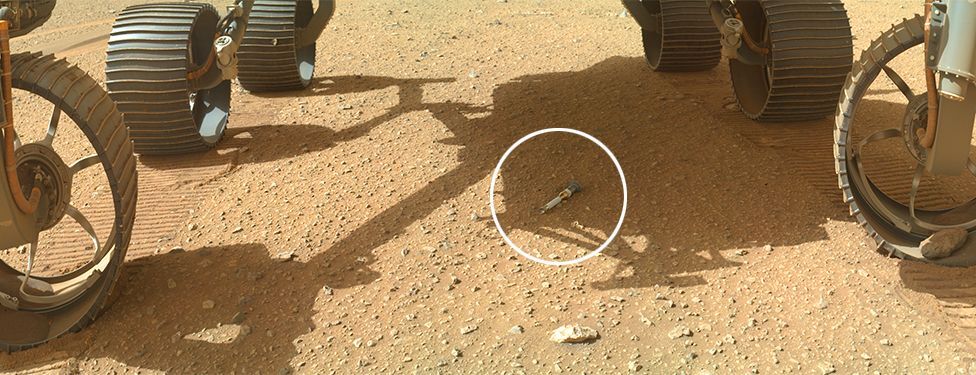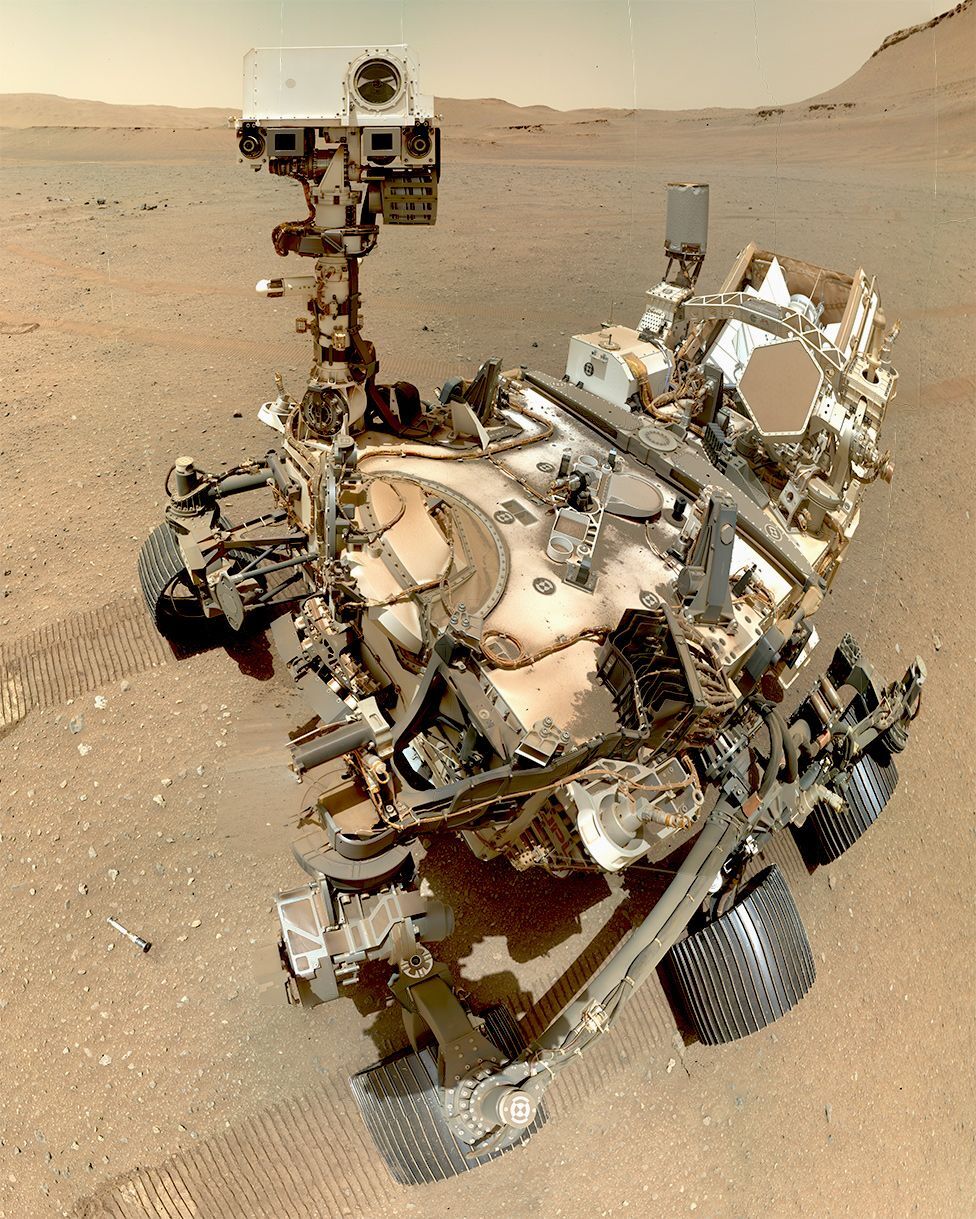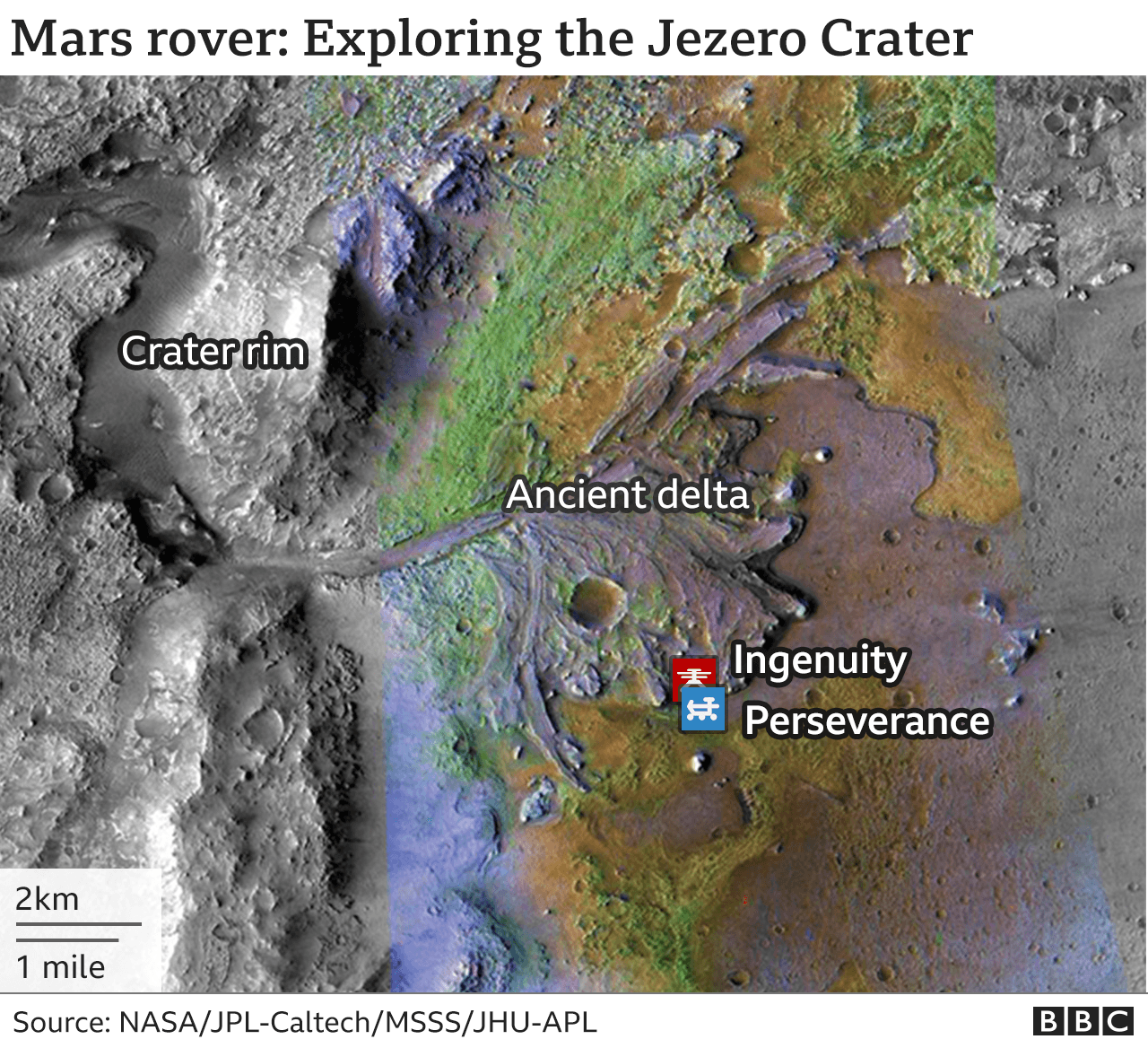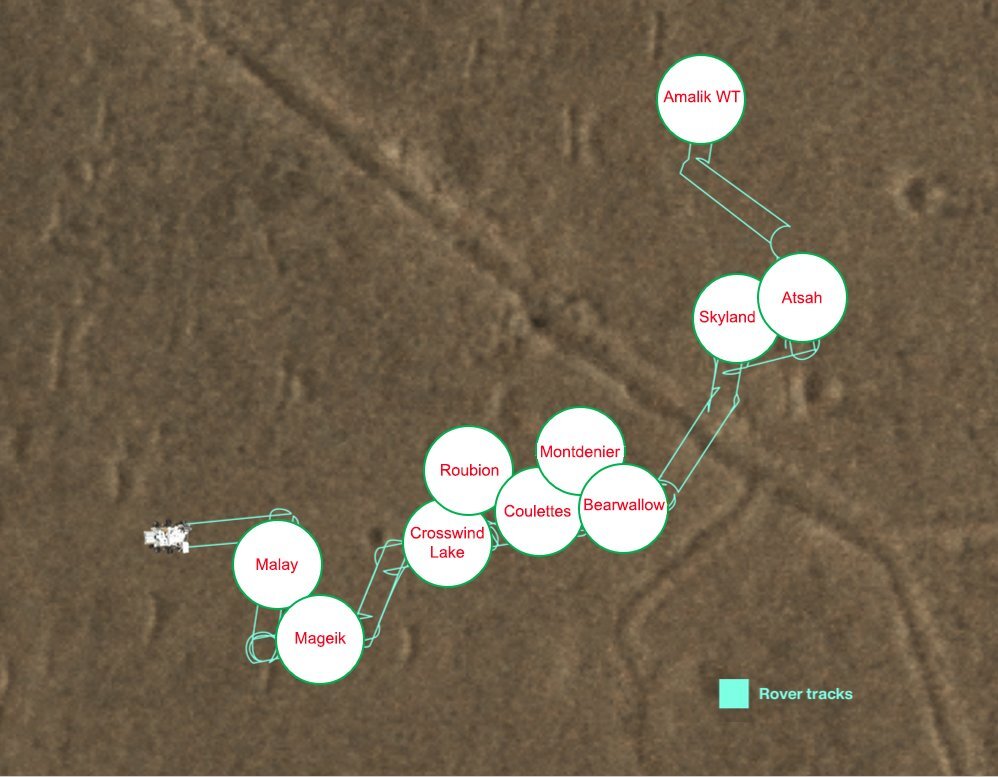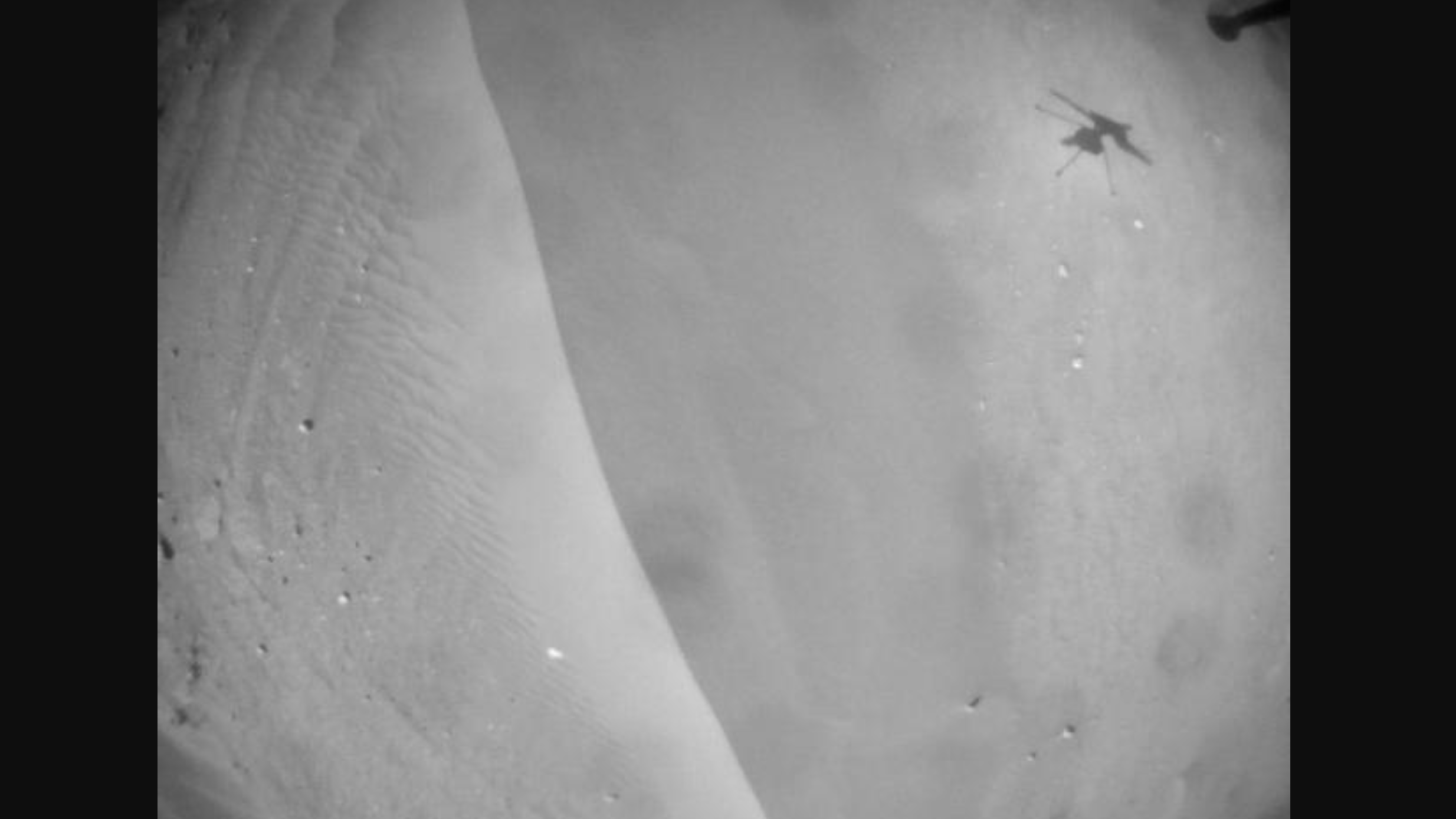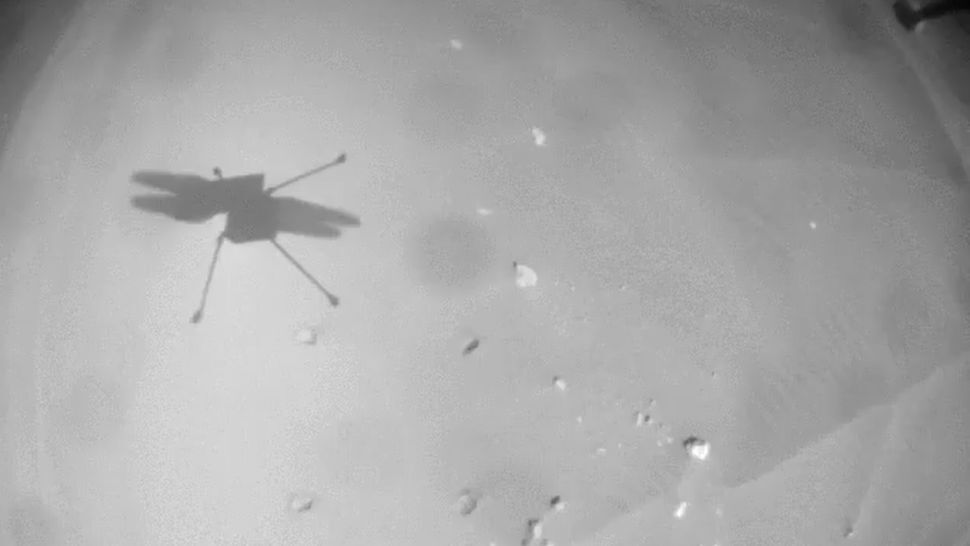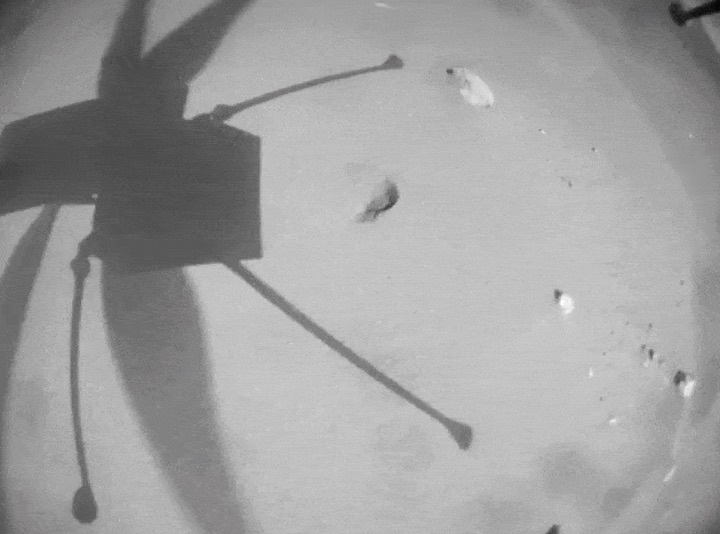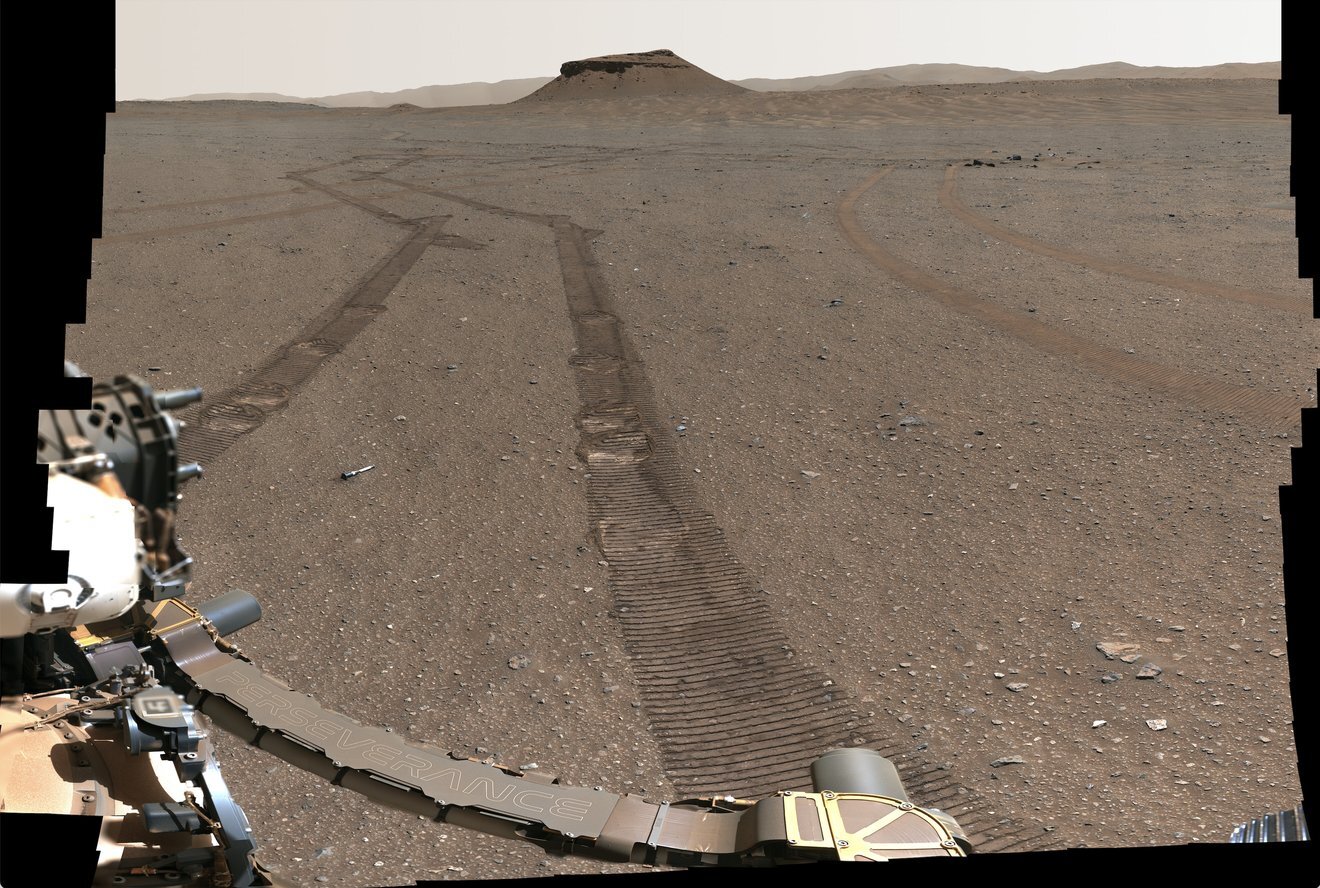Even space robots know what “pics or it didn’t happen” means: NASA’s Perseverance Mars rover provided a panorama of its recently completed sample depot – a big milestone for the mission and humanity’s first collection of samples on another planet. The panorama, stitched together from 368 images that were sent to Earth, captures more than a month of careful placement and mapping of 10 titanium tubes.
Eight of those tubes are filled with rock and regolith (broken rock and dust), while one is an atmospheric sample and one is a “witness” tube. The rover photographed the depot using the Mastcam-Z camera on the top of its mast, or “head,” on Jan. 31, 2023. The color has been adjusted to show the Martian surface approximately as it would look to the human eye.
The depot represents a backup collection of samples that could be recovered in the future by the Mars Sample Return campaign, a joint effort between NASA and ESA (European Space Agency) that aims to bring Mars samples to Earth for closer study. The rover began building the depot on Dec. 21, 2022, precisely spacing the tubes in case they need to be retrieved at a future date.
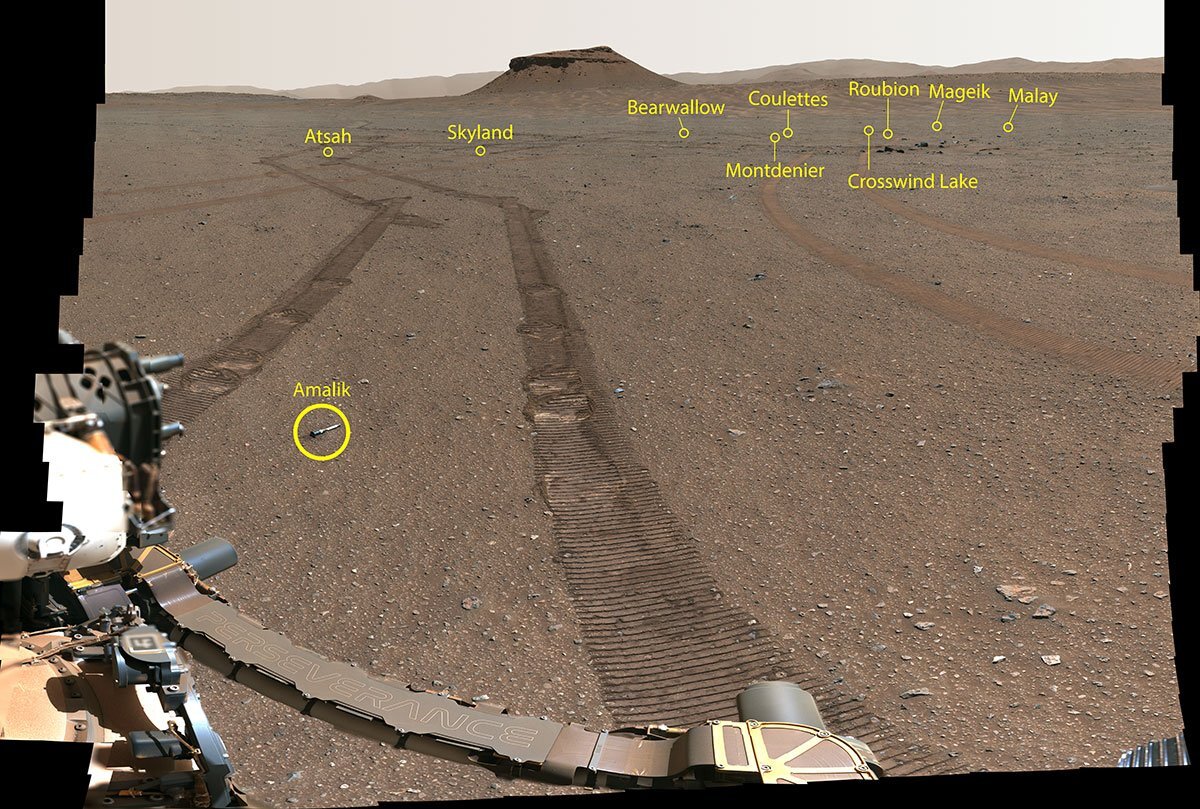
An annotated version of the portrait captured by NASA’s Perseverance shows the location of the 10 sample tubes in the depot. The “Amalik” sample closest to the rover was about 10 feet (3 meters) away; the “Mageik” and “Malay” samples farthest away were approximately 197 feet (60 meters) from the rover. Credit: NASA/JPL-Caltech/ASU/MSSS
The primary tubes reside in the belly of Perseverance, which would pass them, along with future samples taken during the mission to a Sample Retrieval Lander as part of the campaign. If anything were to happen to the rover to prevent it from delivering tubes directly to the lander, samples could be retrieved from the depot instead. (Learn more about all 18 samples taken so far.)
Perseverance built the depot at “Three Forks,” a location within Jezero Crater. Billions of years ago, a river flowed into the crater, carrying sediment that formed a steep, fan-shaped delta that the rover will drive up in the months ahead.
While the Martian surface is now cold, dry, and generally inhospitable to life, ancient Mars was likely similar to Earth – and could have supported microbial life, if any ever formed on the Red Planet. The samples Perseverance is collecting could help scientists determine whether life ever left its mark in a place like Jezero Crater.
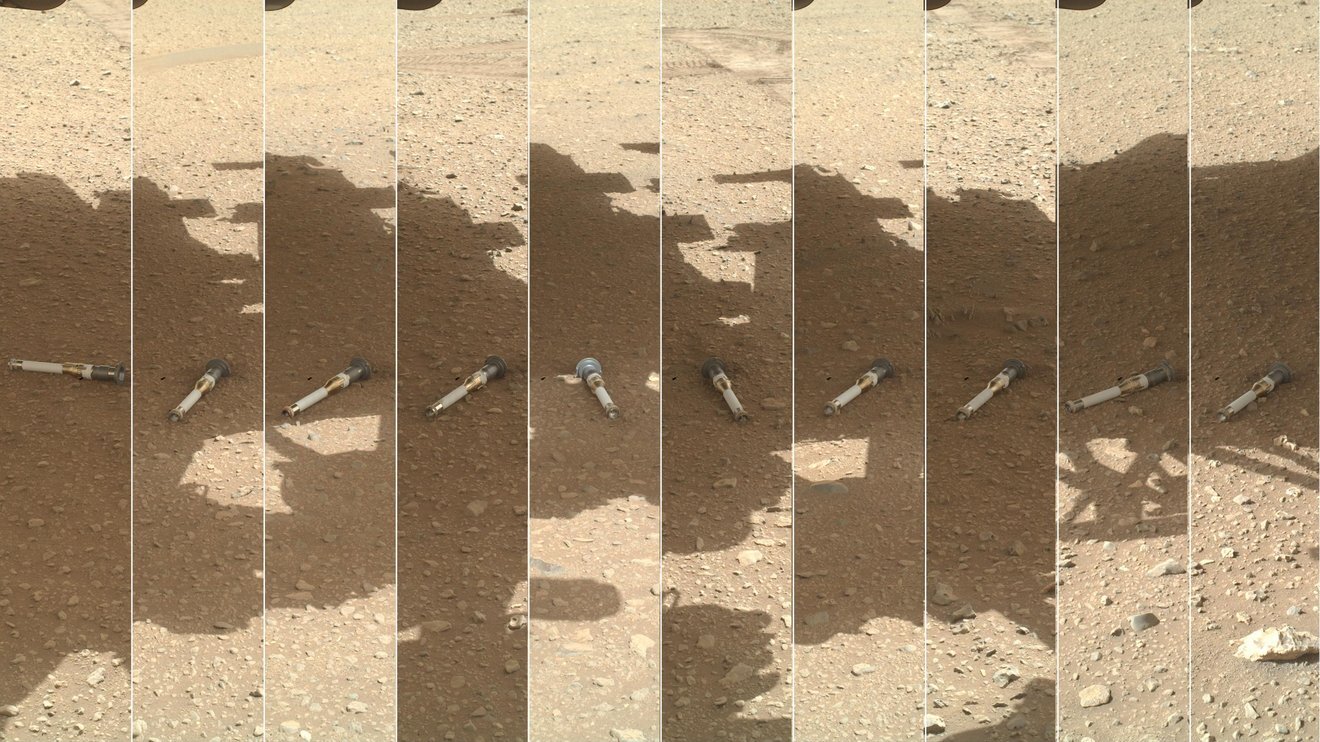
This photomontage shows each of the sample tubes deposited by NASA's Perseverance Mars rover at the Three Forks sample depot, as viewed by the WATSON camera on the end of the rover's robotic arm.
Credit: NASA/JPL-Caltech/MSSS
More About the Mission
A key objective for Perseverance’s mission on Mars is astrobiology, including the search for signs of ancient microbial life. The rover will characterize the planet’s geology and past climate, pave the way for human exploration of the Red Planet, and be the first mission to collect and cache Martian rock and regolith (broken rock and dust).
Subsequent NASA missions, in cooperation with ESA (European Space Agency), would send spacecraft to Mars to collect these sealed samples from the surface and return them to Earth for in-depth analysis.
The Mars 2020 Perseverance mission is part of NASA’s Moon to Mars exploration approach, which includes Artemis missions to the Moon that will help prepare for human exploration of the Red Planet.
JPL, which is managed for NASA by Caltech in Pasadena, California, built and manages operations of the Perseverance rover. Arizona State University leads the operations of the Mastcam-Z instrument, working in collaboration with Malin Space Science Systems in San Diego, on the design, fabrication, testing, and operation of the cameras, and in collaboration with the Neils Bohr Institute of the University of Copenhagen on the design, fabrication, and testing of the calibration targets.
Quelle: NASA
----
Update: 19.02.2023
.
NASA’s Perseverance Rover Set to Begin Third Year at Jezero Crater
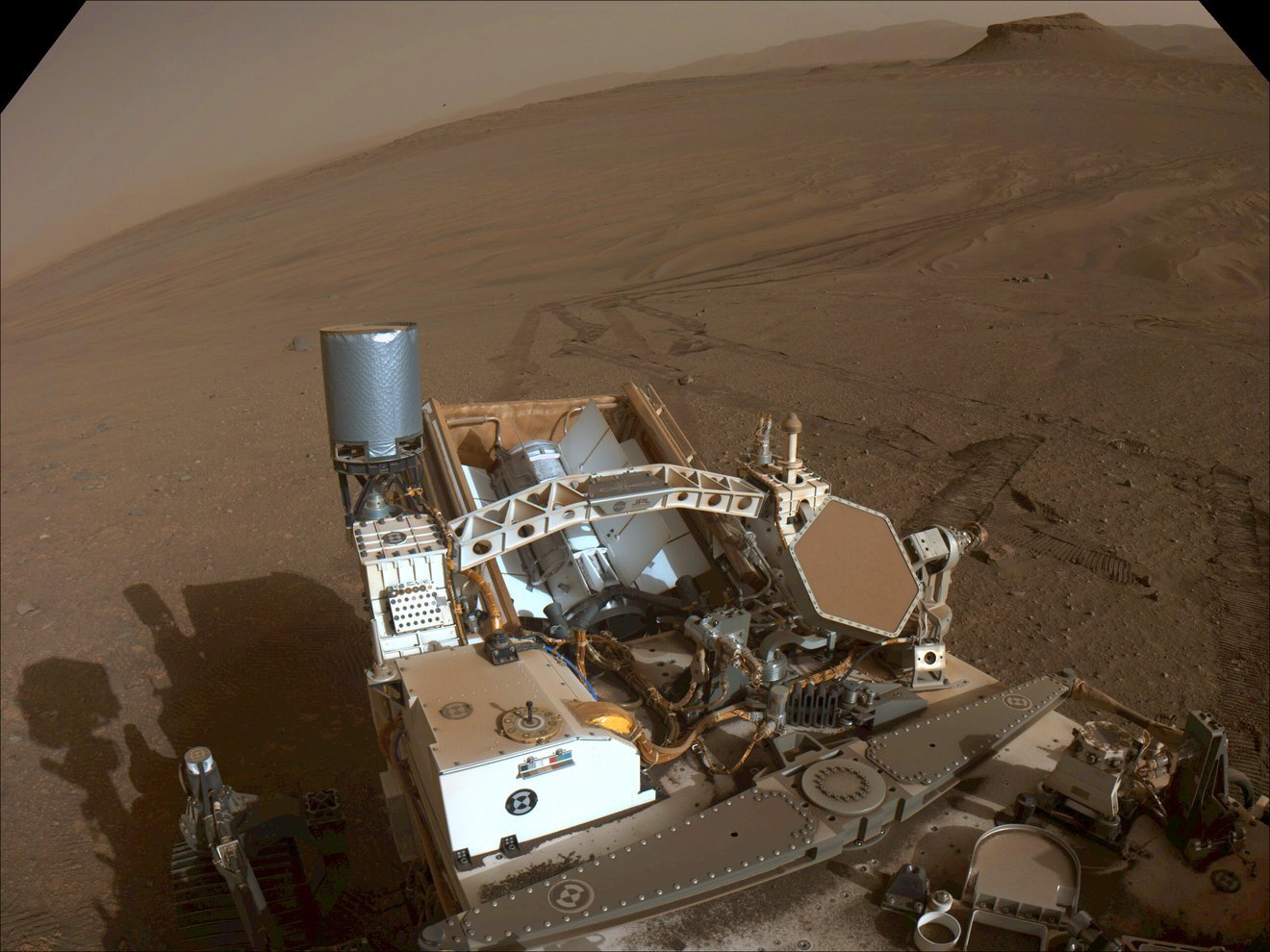
This image of the floor of Jezero Crater was taken by one of the Navcam imagers aboard NASA’s Perseverance Mars rover on Feb. 5, the 698th Martian day, or sol, of the mission.
Credit: NASA/JPL-Caltech
After completing the first sample depot on another world, the rover continues its hunt for Mars rocks worthy of study on Earth.
NASA’s Perseverance rover will celebrate its second anniversary on the surface of Mars Saturday, Feb. 18. Since arriving at Jezero Crater in 2021, the six-wheeled, nuclear-powered rover has been examining geologic features and collecting samples of the Red Planet that are central to the first step of the NASA-ESA (European Space Agency) Mars Sample Return campaign. Scientists want to study Martian samples with powerful lab equipment on Earth to search for signs of ancient microbial life and to better understand the processes that have shaped the surface of Mars.
This is a high-resolution version of a video taken by several cameras as NASA’s Perseverance rover touched down on Mars on Feb. 18, 2021. Cameras aboard the rover captured these shots; a microphone captured the first-ever audio of a Mars landing.
Credit: NASA/JPL-Caltech
“Anniversaries are a time of reflection and celebration, and the Perseverance team is doing a lot of both,” said Perseverance project scientist Ken Farley of Caltech in Pasadena. “Perseverance has inspected and performed data collection on hundreds of intriguing geologic features, collected 15 rock cores, and created the first sample depot on another world. With the start of the next science campaign, known as ‘Upper Fan,’ on Feb. 15, we expect to be adding to that tally very soon.”
In addition to the rock cores, Perseverance has collected two regolith samples and one atmospheric sample, and it has sealed three “witness” tubes. (Learn more about all 18 samples taken so far.)
Numbers play a big role in the life of a Mars rover mission, not just because the team includes an impressive quantity of scientists (who don’t usually mind numbers) and engineers (who love them), but because statistics provide the best and most efficient glimpse of vehicle trends and performance.
For instance, the mission can tell you not only that the rover has driven 9.3 miles (14.97 kilometers), but also that as of Feb. 14, its left front wheel has performed 9,423 revolutions. They can tell you not only that the MOXIE (short for Mars Oxygen In-Situ Resource Utilization Experiment) technology demonstration has produced 3.25 ounces (92.11 grams) of oxygen, but also that the Gas Dust Removal Tool (gDRT) – the little gas-puffing device on the robotic arm – has puffed 62 times to clear residual dust and particles from rock-abrading activities.
“We deal with a lot of numbers,” said Perseverance deputy project manager Steve Lee from NASA’s Jet Propulsion Laboratory in Southern California. “We collect them, evaluate them, compare them, and more times than we want to admit, bore our loved ones with them during a family dinner.”
With that, here are some the most up-to-date statistics regarding Perseverance’s first two Earth years of Jezero surface operations. Some will seem obscure, while others are more immediate, but they all underscore how productive the mission has been.
Perseverance Science Statistics
The rover carries seven science instruments, and they’ve been busy.
- Laser shots fired by the SuperCam science instrument: 230,554
- Soundings performed by the RIMFAX (Radar Imager for Mars’ Subsurface Experiment) ground-penetrating radar to study underground rock layers: 676,828
- Mars audio recordings taken by SuperCam’s microphone: 662
- Hours of Mars weather data recorded by MEDA (Mars Environmental Dynamics Analyzer): 15,769.1
- Hours the X-ray filament on the PIXL (Planetary Instrument for X-ray Lithochemistry) instrument has operated: 298.2
- Laser shots by the SHERLOC (Scanning Habitable Environments with Raman & Luminescence for Organics & Chemicals) instrument: 4,337,010
- SHERLOC spectroscopy observations: 33
Perseverance Mobility and Operational Statistics
Along with the massive drill-toting robotic arm, the rover has a small sample handling arm inside its belly.
- Times the rover’s main robotic arm has been unstowed and stowed: 64
- Times the drill on that arm has touched Mars: 39
- Times drill bits have been exchanged: 48
- Abrasions performed by the drill: 17
- Distance the rover’s sample handling arm’s z-stage has traveled up and down: 676.1 feet (206.1 meters)
Perseverance’s Camera Statistics
Perseverance packs seven science cameras along with nine engineering cameras. Together, those cameras have taken more than 166,000 images. Here are the image tallies for several of them.
- Mastcam-Z: 86,660
- Navigation Cameras: 21,571
- Front Hazard-Avoidance Cameras: 3,909
- Rear Hazard-Avoidance Cameras: 474
- Sampling and Caching System Camera:1,321
- SuperCam Remote Micro-Imager: 2,825
- SHERLOC WATSON: 5,754
- SHERLOC Context Imager: 2,260
- MEDA SkyCam: 1,831
- PIXL Micro-Context Camera: 1,012
- Entry, Descent, and Landing Cameras: 33,279
The descent stage holding NASAs Perseverance rover can be seen falling thorough the Martian atmosphere in this image taken on Feb. 18, 2021, by the HiRISE camera aboard the Mars Reconnaissance Orbiter. An ellipse indicates where Perseverance touched down.
Credit: NASA/JPL-Caltech/University of Arizona
“Behind each number is a lot of thought and effort from a very talented group of women and men on the Perseverance team,” said Art Thompson, Perseverance project manager at JPL. “We have come a long way together, and I can’t think of a better group to work with as we go even farther.”
In fact, when Perseverance marks its second landing anniversary, Mars will be 97 million miles (156 million kilometers) from Earth. The weather at Jezero Crater is expected to be sunny with a high of about 7 degrees Fahrenheit (minus 14 degrees Celsius). The rover has instructions to perform remote science and take images of a place in Jezero Crater called “Jenkins Gap.” And people on the mission team are expected to take at least one moment to recall where they were and how they felt two years ago, when Perseverance landed on Mars.
More About the Mission
A key objective for Perseverance’s mission on Mars is astrobiology, including caching samples that may contain signs of ancient microbial life. The rover will characterize the planet’s geology and past climate, pave the way for human exploration of the Red Planet, and be the first mission to collect and cache Martian rock and regolith.
Subsequent NASA missions, in cooperation with ESA, would send spacecraft to Mars to collect these sealed samples from the surface and return them to Earth for in-depth analysis.
The Mars 2020 Perseverance mission is part of NASA’s Moon to Mars exploration approach, which includes Artemis missions to the Moon that will help prepare for human exploration of the Red Planet.
JPL, which is managed for NASA by Caltech, built and manages operations of the Perseverance rover.
Quelle: NASA
----
Update: 24.02.2023
.
NASA rover snaps photos of ancient 'waves' carved into Mars mountainside
NASA's Curiosity Mars rover has photographed clear signs of ripples locked into a Martian rock, a sign of an ancient lake on the Red Planet's surface.
NASA's Curiosity Mars rover has photographed rocks imprinted with tiny ripples from an ancient lake. And these tiny ripples are making waves on Earth, as they are the clearest evidence yet that water once existed on Mars.
The ripple marks were discovered frozen in Martian rock on the slopes of Mount Sharp. Though Curiosity has traversed many rock deposits laid down in ancient lakes, scientists had not seen such vivid marks in the rocks before.
"This is the best evidence of water and waves that we've seen in the entire mission," Ashwin Vasavada, Curiosity's project scientist at NASA's Jet Propulsion Laboratory in Southern California, said in a statement(opens in new tab). "We climbed through thousands of feet of lake deposits and never saw evidence like this – and now we found it in a place we expected to be dry."
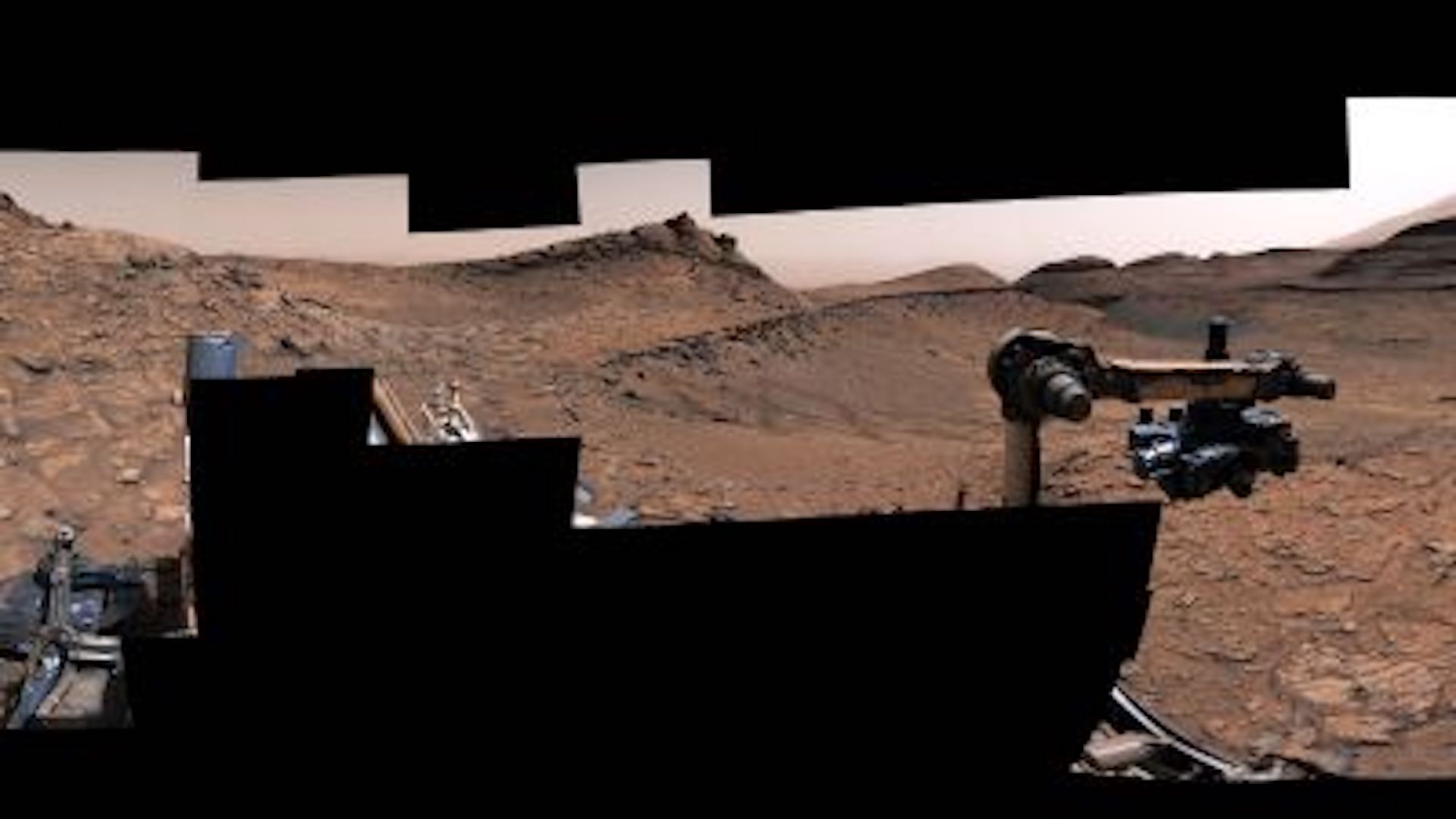
A portion of a panorama taken by the Mars Curiosity rover of the "Marker Band" section of Mount Sharp. (Image credit: NASA/JPL-Caltech/MSS)
Since last fall, the rover has been exploring a region of what scientists call "sulfate-bearing" rock. Scientists believe this salt-rich area was deposited when an ancient lake was nearly dry. But the ripples were created on the bottom of a shallow lake as winds created waves on the lake's surface, disturbing the sediments below.
The ripple marks are about 0.5 mile (0.8 kilometer) up Mount Sharp, a mountain made up of a layer cake of rock that records Martian history. The 3-mile-tall (5 km) mountain was once dotted with lakes and streams, making it an intriguing area to search for signs of ancient Martian life, according to the NASA statement.
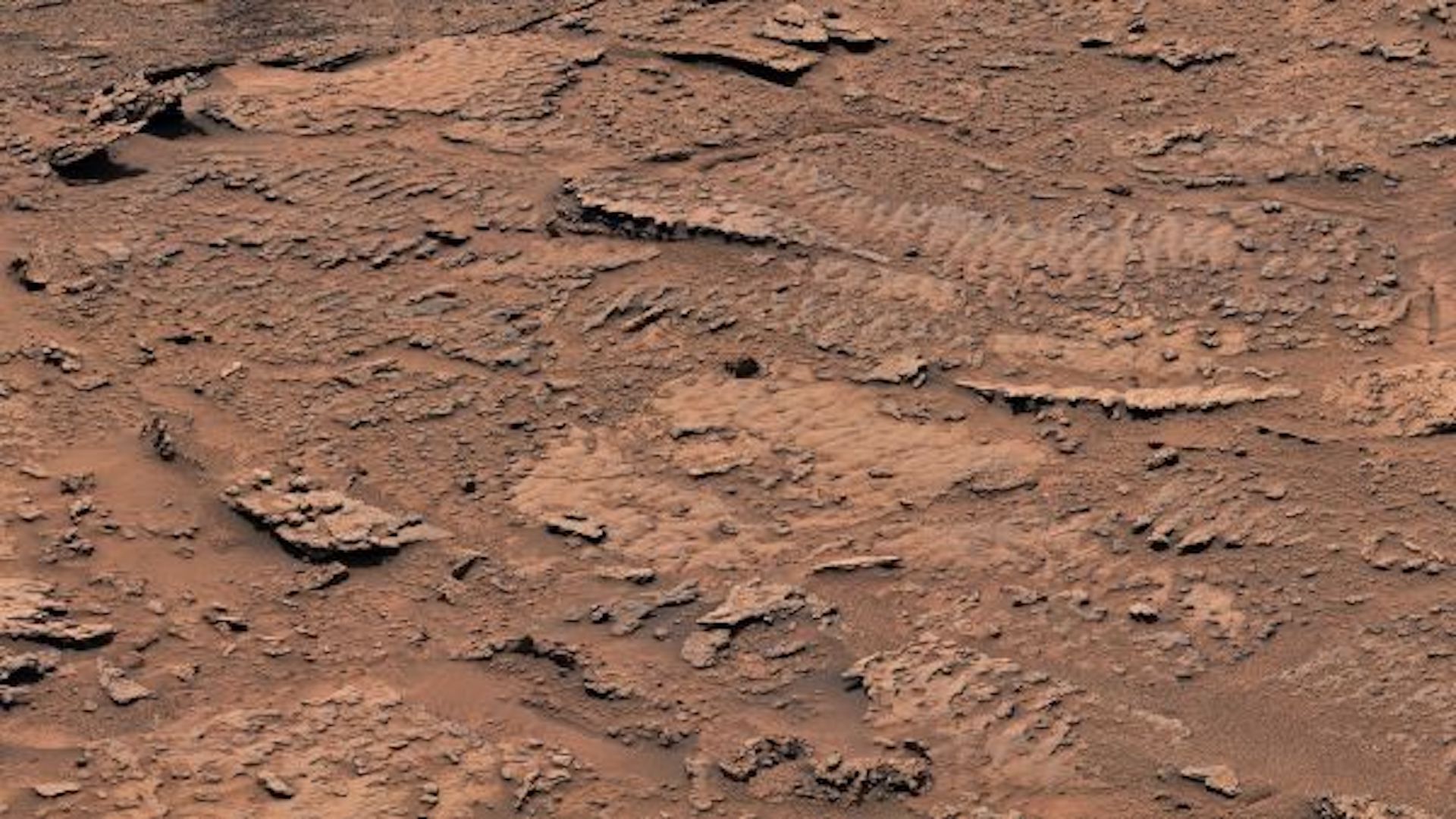
The bumpy texture of these rocks is the clearest evidence yet from Mount Sharp of an ancient Martian lake. Billions of years ago, wind playing across the surface of a shallow lake disturbed the lake-bottom sediments, which eventually became these rocks. (Image credit: NASA/JPL-Caltech/MSSS
Curiosity captured a 360-degree panorama of a layer of rock known as the "Marker Band" on the slope of the mountain on Dec. 16, 2022. The rover also attempted to drill into the rocks of this layer, near the rippled features, but the rocks were too hard. Curiosity's drivers plan to look for softer rock in the layer for additional drilling attempts.
The presence of ripples in a supposedly dry area suggests that Mars did not go from wet to dry in a simple, linear manner, the Curiosity researchers said. Near the rippled rocks, researchers also saw rock layers with regular spacing and thickness. These types of layers often occur on Earth during patterns of periodic change.
"Mars' ancient climate had a wonderful complexity to it," Vasavada said, "much like Earth's."
As Curiosity continues to explore the Marker Band, mission scientists hope the rover will get a view of a wind-carved valley known as Gediz Vallis high on Mount Sharp. The valley appears to hold debris from wet landslides and a channel that may have been formed by a river.
Quelle: SC
----
Update: 4.03.2023
.
Mars helicopter Ingenuity soars between Red Planet airfields on 46th flight
The helicopter flew a third of a mile on the surface on Feb. 25, NASA's Jet Propulsion Laboratory announced yesterday (March 1).
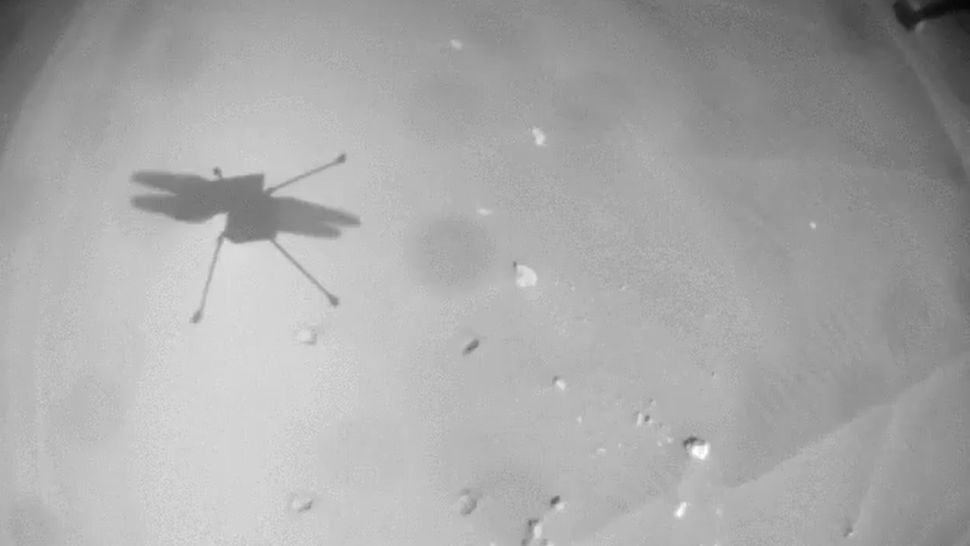
Shown here is a still image from the Mars helicopter Ingenuity on April 8, 2022. (Image credit: NASA/JPL-Caltech)
Ingenuity hopped a third of a mile on the Red Planet as it shifted between airfields.
Ingenuity, the Mars helicopter drone accompanying the Perseverance rovermission, racked up its 46th flight on Saturday (Feb. 25), NASA's Jet Propulsion Laboratory announced(opens in new tab) yesterday (March 1).
The goal of the flight was to "reposition of the helicopter and [to] scout future airfields," agency officials wrote in a flight briefing(opens in new tab).
The drone flew for about 1,460 feet (445 meters) on the Martian surface between airfields "Eta" and "Theta," according to the helicopter's flight log(opens in new tab). Ingenuity reached a typical 39-foot altitude (12 meters) and achieved a top speed of 11.9 mph (5.3 meters per second) during the 135.9-second flight.
Ingenuity is about to exceed its original five-flight manifest by 10 fold, as the four-pound (1.8 kg) shoots for its 50th flight in the coming weeks.
The helicopter was the first ever to fly on Mars, arriving in Jezero Crater in February 2022 underneath the belly of Perseverance. Now that it has proven itself without a doubt to be fully operational, Ingenuity's mandate has expanded to assisting Percy with the search for ancient life in Jezero Crater, the site of an ancient river delta.
NASA now plans to include two sample helicopters on a joint mission with the European Space Agency to return samples from Mars. Percy is supposed to bring samples to the lander itself, but if it is unable to, the two backup helicopterswill pick up identical lightsaber-shapedsample tubes Percy has been caching on the surface.
Ingenuity and Perseverance alike are in the midst of an eight-month campaign, nicknamed "Delta Top." They are working in a region that appears to have once had a lake and a river delta that may have hosted life billions of years ago.
Quelle:SC
